| 200-500mm |
$1,389 average price |
|---|---|
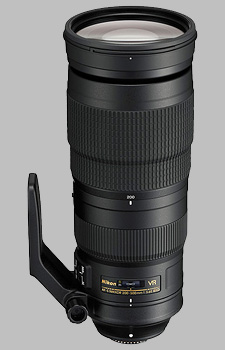
|
|
Your purchases support this site
Buy the Nikon 200-500mm f/5.6E ED VR AF-S Nikkor
Click here to jump directly to the Nikon 200-500mm f/5.6E VR Overview
Nikon 200-500mm f/5.6E VR Field Test
A lot of performance for the price
by Jeremy Gray | 01/06/2016
Updates:
06/09/2016: Added D500 Gallery shots
10/24/2016: Added D3400 Gallery shots
11/22/2017: Added D850 Gallery shots
Nikon's newest telephoto zoom lens, the AF-S Nikkor 200-500mm f/5.6E ED VR delivers great performance for a reasonably low cost of just under US$1,400.
|
D500: 500mm (750mm equivalent), f/5.6, 1/800s, ISO 280.
[Clicking any image will access the full-size image and EXIF data.] |
The 200-500mm lens is neither small nor light, but for its focal length it is a manageable size. It weighs in at 81.2 ounces (2,300 grams) and is 10.5 inches (267.5mm) long when at the 200mm focal length. The lens has a 4.2 inch (108mm) diameter and accepts 95mm screw-on filters, which is not a particularly common filter size. When using the lens at 500mm, it becomes quite a bit longer, but it remained well-balanced with my D800E.
The lens body itself looks nice and has typical Nikon styling, with gold branding and white focal length markings on the lens. The focal lengths (200, 300, 400, and 500mm) are painted on the zoom ring, but the markings on the lens barrel and tripod collar are engraved. Unlike many lenses, the focus ring is actually closer to the camera than the zoom ring, and I think that this is a good decision because it allows you to change the focal length while maintaining good balance and lens-holding technique. Manual focusing is useful at times, but the ring will certainly be used less regularly than the zoom ring for most users and is easily accessed.
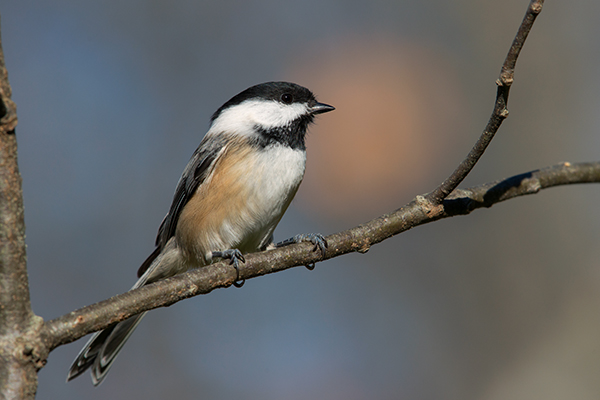 |
D800E: 500mm, f/8, 1/1250s, ISO 400. This image has been modified. Click for full-size image. |
One aspect of the zoom ring that I dislike, however, is that it requires about 180 degrees of rotation to zoom from 200 to 500mm. If it could zoom with a shorter range of motion, I think that the lens would handle a lot better. The focus ring rotates well, but it’s a bit loose-feeling.
D850: 440mm, f/5.6, 1/800s, ISO 200. Click for full-size image. |
In my opinion, the tripod collar is an area of strength for the 200-500mm lens. It also features a very neat design for removing it; if you line up the white arrow on the tripod collar with the marking on the lens, you can unscrew and simply slide the tripod collar off (so long as the lens isn’t attached to a camera, that is). The 200-500mm also includes a screw-on lens hood that is quite large and does its job well. It can be reversed and put back on the lens when transporting. Additionally, there’s a switch on the lens to lock it at 200mm for ensuring that it doesn’t extend during transporting.
|
D3400: 200mm (300mm equivalent), f/5.6, 1/200s, ISO 3200.
This image has been modified. Click for full-size image. |
Now let's move on to performance. The 200-500mm lens has performed very well for me. I don’t mean that it has performed well for an affordable telephoto zoom either, I mean that it has performed well in absolute terms. The lens is sharp wide open across the entire focal length range and delivers fast, reliable autofocus performance. While a constant aperture of f/5.6 is not always ideal, especially when shooting in low light or shooting a fast-moving subject, a 200-500mm f/4 lens would be much larger, heavier, and more expensive (Nikon’s most recent 200-400mm f/4 lens weighs 7.4 lbs (3.36 kg) and costs nearly $7000 USD, for example). Even Nikon’s 80-400mm f/4-5.6 lens costs nearly $1000 USD more than the 200-500mm f/5.6.
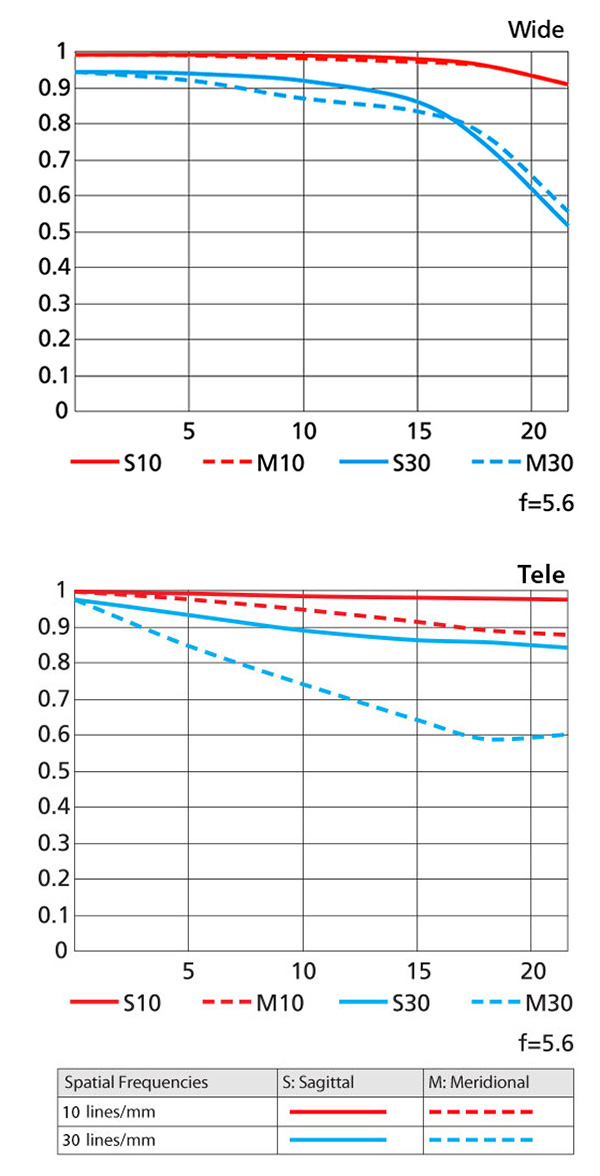 |
The f/5.6 aperture has not proven to be much of an issue for me out in the field considering the high ISO capabilities of modern DSLR cameras, but it does mean that using teleconverters with the 200-500mm lens can be difficult. Using a Nikon DSLR capable of autofocusing at f/8, autofocus is possible with the TC-1.4 teleconverter, but it is not fast. Using any teleconverter beyond that will require manually focusing the lens and will not produce particularly good results nor be usable for most types of wildlife photography.
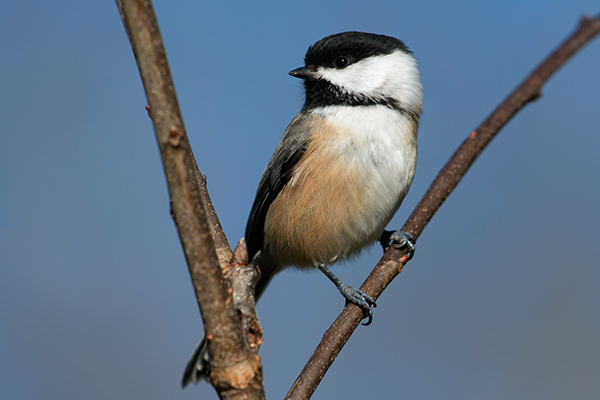 |
D800E: 700mm (500mm + TC-14e III), f/8, 1/1600s, ISO 400. This image has been modified. Click for full-size image. |
When using the 200-500mm lens without a teleconverter, autofocus performance is really good. Compared to my 70-200mm f/2.8G VR II lens (my fastest autofocusing lens), the 200-500mm held up very well in good lighting conditions. The 70-200mm lens is a bit faster, but the 200-500mm isn’t far behind and its autofocus performance really impressed me. Autofocus speeds slowed down slightly at 500mm, but the lens remains very snappy. For increased speeds when photographing distant subjects, there’s a switch on the lens to limit the focus to 6m to infinity. With its full autofocus range enabled, the lens can close focus to 7.2 feet (2.2 meters) and it provides a maximum reproduction ratio of 0.22x.
|
D3400: 500mm (750mm equivalent), f/5.6, 1/800s, ISO 200.
This image has been cropped. Click for full-size image. |
Vibration reduction is impressive as well. In Sport mode (enabled via a switch on the lens, you can choose between ‘Normal’ and ‘Sport’), the 200-500mm provides around 4.5 stops of vibration reduction. I found it to be very effective and it allowed me to capture sharp images at shutter speeds I wouldn’t normally expect to be able to capture images at, especially at a focal length like 500mm. This good vibration reduction performance also helps alleviate some of the issues of using an f/5.6 lens in low light conditions.
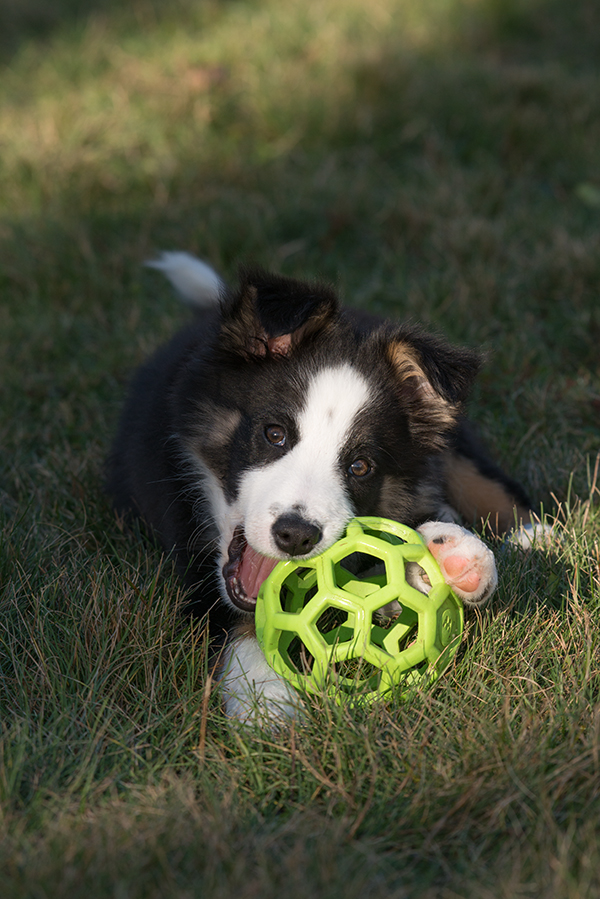 |
D800E: 700mm (500mm + TC-14e III), f/8, 1/1600s, ISO 400. This image has been modified. Click for full-size image. |
Nikon will be shipping us a 200-500mm lens for testing in our lab, so a full review of the lens and its optical performance is forthcoming, but in the meantime I can say that I have not observed optical aberrations. Corner sharpness does fall off a bit, especially when shooting wide open at the extreme ends of the lens, but this is typically not an issue for wildlife photography anyway. This lens does not feature Nikon’s Nano Crystal coating, but I have not experienced issues with flare or reflections.
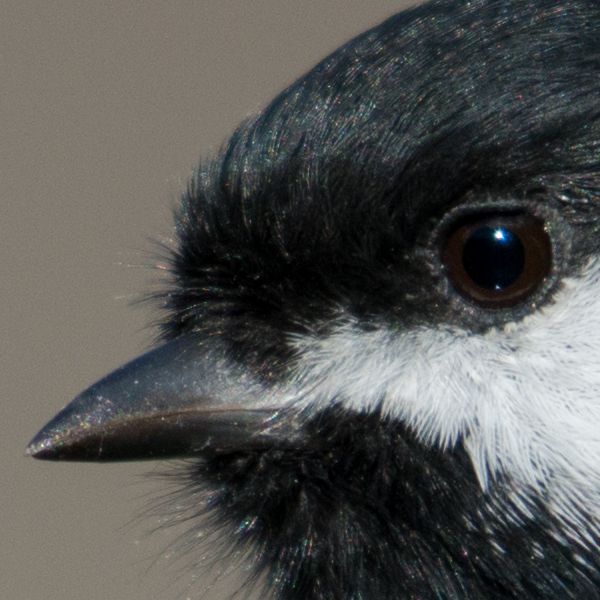 |
100% crop of RAW image with default Adobe Camera RAW sharpening converted to JPEG. D800E: 500mm, f/5.6, 1/1250s, ISO 400 |
Overall, I am thrilled with the Nikon 200-500mm f/5.6E lens. It isn’t perfect as its f/5.6 aperture limits its usability in low light and when using teleconverters, but it’s light enough for me to carry around all day, small enough to fit in my backpack, and it provides solid performance. This lens could easily be priced higher and still be a good value. If you are a Nikon photographer looking for a new telephoto zoom, I highly recommend this lens.
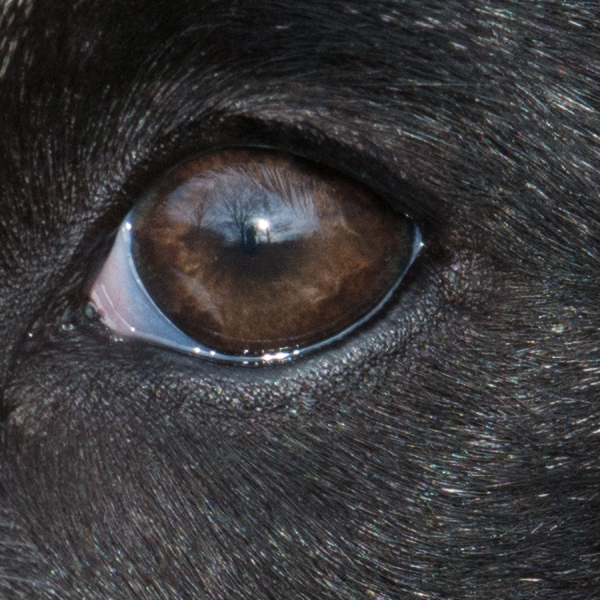 |
100% crop of RAW image with default Adobe Camera RAW sharpening converted to JPEG. D800E: 390mm, f/9, 1/400s, ISO 640 |
See a lot more real-world images from this lens taken with the
Nikon D850, D800E, D500 and D3400 on our massive
Nikon 200-500mm f/5.6E VR Gallery page!
Nikon 200-500mm f/5.6E VR Overview
(From Nikon lens literature) Wherever your passion lies, this outstanding super telephoto zoom lens can bring it into focus. Capture and share stunning views of birds, wildlife, motorsports, athletes, performers, landmarks and other faraway subjects. A fast f/5.6 constant aperture gives your shots beautifully out-of-focus backgrounds across the entire zoom range. Turn fast-moving action into dazzling photo sequences -- the electromagnetic diaphragm operates in sync for the fastest subjects and shutter speeds while Vibration Reduction image stabilization keeps your shots sharp and steady. And in the rare cases when additional reach is needed, you can increase the AF-S NIKKOR 200-500mm f/5.6E ED VR's zoom power with an optional Nikon 1.4x, 1.7x or 2x teleconverter*.
Whether your subject is far in the distance or close, fast or slow, you can land the shot. On FX-format cameras, 500mm brings distant birds, wildlife, athletes, performers, landmarks and more into tight focus. DX-format cameras add an additional 1.5x zoom effect for an angle of view equivalent to a whopping 750mm! And despite that extreme power, you can also focus on subjects as close as 7.2 feet away for detail rich close-ups.
At super telephoto distances, the smallest camera movements can cause image blur. Vibration Reduction image stabilization counteracts camera shake up to ~4.5 stops** for sharp photos and steady videos. You also can shoot at slower shutter speeds in low light -- great for those magic moments at dawn and dusk. Sports Mode is optimized for camera pans and other movements common when shooting fast action.
Extra-low Dispersion (ED) glass cuts through the glare of bright sunlight. Silent Wave Motor (SWM) powers ultra-fast, near-silent autofocusing with seamless manual override. The Electromagnetic diaphragm (E) operates in sync with the fastest shutter speeds and frame rates, even when using an optional teleconverter. Always bring home views that amaze.
The AF-S NIKKOR 200-500mm f/5.6E ED VR will be available in mid-September 2015 for the SRP of US$1399.95.
The lens incorporates an electromagnetic diaphragm mechanism. The following cameras are compatible with this lens: D5, D4 series, D3 series, Df, D850, D810, D810A, D800 series, D750, D700, D610, D600, D500, D300 series, D7500, D7200, D7100, D7000, D5600, D5500, D5300, D5200, D5100, D5000, D3400, D3300, D3200, D3100, Nikon 1 J1, J2, J3, J4, J5 with FT-1, Nikon 1 V1, V2, V3 with FT-1, Nikon 1 S1, S2 with FT-1.
*Compatible with TC-14E series teleconverters (AF is only available when used with DSLR cameras that offer f/8 support. These include: D5, D4, D4S, Df, D500, D600, D610, D750, D800, D800E, D810, D850, D7100, D7200, D7500). Compatible with TC-17E and TC-20E series teleconverters (AF not possible).
**Based on CIPA Standard. This value is achieved when: FX-format compatible lenses are attached to an FX-format digital SLR camera and zoom lenses are set at the maximum telephoto position.
Nikon 200-500mm f/5.6E ED VR AF-S Nikkor
Your purchases support this site
Nikon F - Black
Nikon 200-500mm f/5.6E ED VR AF-S Nikkor User Reviews
-
light weigth-ish for this range - sharp from 200-500mmzoom ring motion (going from 200-500mm) is not easy; not possble in one turn
very good quality bargain lens! - 950$ is not cheap but worthwhile for this lens.
reviewed August 20th, 2021 (purchased for $950) -
Price Weight and Size VR Good autofocus 2,2 m closest focusing distance Good for handheld useSoft at 500mm Converters not useful
Bought this lens for wildlife photography. Bad news first: this lens is not a really a useful 500 mm lens as it becomes soft at this range. This is similar to Sigma and Tamron 150-600 Zooms and it's an illusion to be able to bargain with limits of physic. For a good performance above the 300mm range you have to spend a lot more money. If you needed more magnification it would be better to get closer to the objects or buy a prime lens instead.
reviewed December 9th, 2020 (purchased for $1,200)
Back to this zoom: It's light, it's well made and it is a good tool for taking good pictures in wildlife. The autofocus is working fast and the VR is very helpful at low light. I did not use any tripod or monopod as this lens is perfect for handheld pictures. The performance at 500mm is acceptable when stopping down,
Don't think I am crazy but I like to use this lens for macro for insects with a great flight distance like big dragon flies or butterflies. 2.2 meter is not much and because of the great sharpness (2stops down) of the lens it is possible to crop nearly 1:1.
There was a situation I only could take a picture of a cobra swimming near by because I used this zoom to be able to focus at 200mm with 2,2m distance. In the next moment I could take a picture of an eagle in the trees with 500 mm 30m away from my location. Both pictures have a good sharpness.
Open F5.6 aperture is not an issue. It's still possibel to make the motive stand out from its background and the bokeh is very nice after my opinion.
I would not recommend to use converters with this lens as you get only disadvantages like blurred pictures, slow AF and high ISO or long exposures. -
Sharp, fantastic VR, relatively inexpensive.Long, gets heavy after a while.
Love the lens. I have used it for wildlife and birds and find it works well with my D800. It can easily be hand held in daylight but I prefer a monopod. The VR snaps everything in to place - surprised me the first time I used it.
reviewed August 23rd, 2016 (purchased for $1,091)
Lens has smooth autofocus and zoom although I find that you will probably need to set the focus manually to start when focusing at the minimum focus distance.
Tripod collar is more robust than some of Nikon's offerings - I have had no issues with it.
I've been using it lately at drag races and find it's the only lens I need. Sharp images, fast focus and great detail. It's a much better buy than the Sigma or Tamron equivalents and competitive in price point as well. -
Vibration reduction Sharp Low distortion Zoom range Price/ValueWeight Zoom ring gearing No weather sealing
Santa gave me this lens to use with my D800 for a safari to Okovango delta in October. I brought the lens with me on our winter vacation in the Florida keys and gave it a good wringing out. In my judgment this is an excellent value.
reviewed March 3rd, 2016 (purchased for $1,386)
The biggest asset of this lens is the VR. Markedly better than the VR II on my Nikon 70-200 VR II F2.8 and my Nikon 24-120 F4. When you activate it the image freezes instantly. This lens can be used hand held on daylight at any zoom setting without losing resolution. The weight of the lens does make it very desirable to use a monopod, tripod or a bean bag for extended shooting. The lens works well for birds in flight.
The zoom range makes it a perfect complement to my zoom collection of 16-35 F2.8, 24-128 F4 and 70-200 F2.8.
I have had less luck using teleconverters. My Tamron 1.4 and Nikon TC-17E II will both focus, but with markedly increased hunting. Definitely not usable for birds in flight, but OK for wildlife standing still.
The bottom line is that this is a keeper and a great value. -
Extremely sharp; remarkable VR; excellent contrast and color rendition; reasonable priceHeavy; long; clumsy
I would highly recommend this lens to anyone who does what it's designed to do: wildlife photography, distant landscape and architectural detail. It's not too hard to carry, even with the neck strap, although some kind of sling would help. But hand-holding while shooting is tiring because it's so heavy and clumsy. I suppose one can get used to that, as I'm finally beginning to feel comfortable with it.
reviewed December 6th, 2015 (purchased for $1,090)
Zooming is very smooth, but a bit awkward because it takes a lot of turning to zoom out and in. So I'm not sure it would be the best lens for flying birds or even some sporting events.
The VR is so good that camera shake is minimal to absent, even in low light. From a seated position, I was able to shoot knick-knacks in my den at speeds of 1/10 second down to 1/3 second! The resulting images surprised me by their sharpness.
Outdoors, the problem is the lens's length. It's a long, heavy cantilever. So even a fairly light breeze affects it, held out there scanning for pictures. In windy conditions, I found it particularly hard to hold, and image quality suffered.
So carrying this lens is not the primary problem; one can get used to the weight and odd balance even on a relatively small DSLR, like my Nikon D7500s, with which I use it. But hand-holding for extended periods, especially in wind or even a fairly light breeze, is tiring.
I don't use a tripod, but it shouldn't be necessary with this lens, as the VR is so effective. Image capture...autofocus and aperture setting...is instantaneous, as in most of this year's iteration of Nikon lenses. Because of this, I didn't have to hold it out there for long before shooting. That definitely helps.
The tripod collar initially got in the way, so I removed it. until I found a camera pistol grip that attaches to the tripod arm. So I've now put the tripod collar back on...to cradle it on my hand while shooting or to use with the pistol grip. I don't know if that improves anything, but there it is.
I tested it shooting ordinary things, not test screens: Birds, distant mountains, flowers, etc. It does well on all of these subjects, except flying birds. Zooming is awkward, because of the low gear ratio. So one would have to spot a bird, set the focal length and stick with that while waiting for the subject to appear within the frame.
Out of curiosity, I tried it with the Kenko 1.4x teleconverter. I have the DGX model, which worked superbly on my dear departed Nikon 70-300 and D7100: quick autofocus and negligible image softening. With the TC on this 200-500 lens autofocus was not as quick or as precise on the D7100, and focus was not captured at all on the D610. But the latter, at least, was to be expected, because of unreliable AF at f/8. But there does seem to be a slight incompatibility between the Kenko TC and this lens, even on my D7200 and D7500s. My Nikon TC-14E II works much better with this lens.
I tried using extension tubes, to see if the minimal focal distance could be reduced for extra magnification on closer subjects. Yes, they work, but it takes a lot of them, pushing the whole rig even farther out, to achieve any meaningful result. In other words, this lens is what it is, and is so good within the range of usage for which it was designed that there's no point in pushing it.
When shooting distant mountains it appears, at first, that contrast at 500mm is sacrificed. But that's because one is shooting through microscopic dust and haze even on a clear day. With closer subjects, contrast is excellent. So it's just atmospheric effects, which I can easily remove in post-processing.
This lens is even sharper than the AF-P DX VR 70-300, something I noticed at all subject distances. Anyone with that very sharp lens, or presumably with the FX version, will be amazed at the difference.
I noticed no difference in any important effects...image capture, contrast, sharpness, etc...at any of the focal lengths in its range. I didn't shoot on targets, so I can't comment on distortion, but edges of buildings, stop signs, etc. seemed not to be distorted. Anyhow, distortion is easy to remove, PP.
The lens definitely produces less chromatic aberration than the AF-P 70-300 at longer focal lengths. That I noticed many times.
Frankly, when I rented this lens, I had no intention to buy it; I just wanted to fool around with it to see what it can do. I must say that I was so impressed that I almost changed my mind and bought it from the rental company, even though I don't often shoot the kinds of subjects it was designed for. It's so much fun to play with that I eventually bought one to use alongside my 80-400, as the price is very reasonable, considering what you get. The two lenses are very different, and I'm glad I have both.
But for someone who shoots a lot of wildlife or architectural detail, who can securely pack it with other camera equipment, I recommend this lens without reservation. It's a great tool! Its sharpness, excellent contrast and color rendition, all the way out to 500mm, plus its remarkable VR...especially at such a reasonable price...is really amazing.
I would even recommend it to someone who might only use it on a single African or Indian wildlife park tour. It would be worth the modest extra investment to get breathtaking shots.
As I said, above, I've bought a Nikon USA refurbished 200-500 and compared it with my 80-400 on my Nikon D7200 and D7500s.
I've gotten used to the length and weight of the 200-500, and find that it scans better, because once you learn how to hold it up, you can swing it smoothly. But the 80-400 is much more flexible, as I found out trying to take pictures of the rocks at Joshua Tree NP. With a minimum 200mm focal length, the 200-500 just crops too much, compared with the 80-400, which can take over very well at 80-200. With practice, either lens can be mastered...hand-held.
VR seems just slightly better with the 200-500, but AF is definitely faster with my copy of the 80-400. Both lenses work well with the Nikon TC-14EII (this lens perhaps a bit better than with the 80-400), which hardly affects resolution, although, of course, you have to shoot at one stop smaller aperture...in my case, f/11, instead of f/8. But the excellent VR of both lenses compensates for that.
With my two Nikon D7500s, I've done the 80-400/200-500 comparison again, after AF fine-tune for both lenses, with and without the Nikon TC-14EII.
Very little AFFT was required with either lens on the D7500. The 80-400 has superior resolution up to about 280mm; above that the 200-500 beats it. But they're both great throughout their respective ranges. I now carry both of them in one bag with a D7500, plus a 16-80 for the shorter focal lengths.